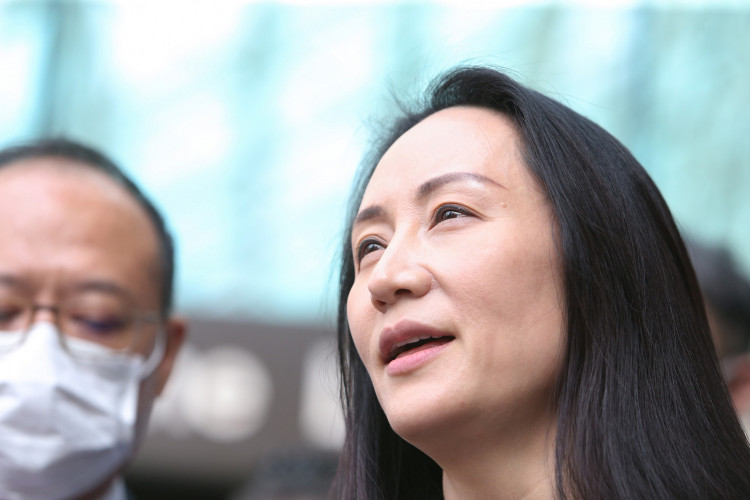On September 20, Huawei's Global Connectivity Conference took place in Shanghai.
Meng Wanzhou, Huawei's Deputy Chairman, Rotating Chairman, and CFO, emphasized at the conference that computational power is the driving force behind the development of artificial intelligence. Huawei is dedicated to establishing a robust computational foundation in China, offering the world a second option.
During the conference, Meng formally announced Huawei's "All Intelligence" strategy, aiming to "accelerate the intelligent transformation across various industries."
She mentioned that under the guidance of the "All Intelligence" strategy, Huawei will continuously build a solid computational foundation to empower a diverse range of applications and industries.
AI Development at a Turning Point: Computational Power is Key
Meng believes that computational power is the core driver of AI development. Large AI models require significant computational power, which determines the speed of AI iteration and innovation and impacts economic growth. The scarcity and high cost of computational power have become central factors limiting AI development.
Meng stated that Huawei is committed to creating a robust computational foundation in China and providing the world with an alternative. The company aims to enhance the integration of "software, hardware, edge, and cloud" to meet the diverse AI computational needs of various industries.
She further noted that AI models with parameters exceeding hundreds of billions or even trillions are rapidly entering various industries, marking a pivotal moment in AI development. The shift from small to large models has led to a qualitative leap in AI's practicality.
Previously, different application scenarios required the development of distinct models. Now, large models can adapt to multiple business scenarios by absorbing vast amounts of knowledge, significantly reducing the barriers to AI development and application. This shift has shortened the cycle from technology to application, allowing AI to move from custom development to industrial-scale solutions.
Meng emphasized that Huawei supports the blossoming of various models in the age of intelligence by opening up computational foundations, AI platforms, and development tools.
Huawei's All Intelligence Strategy: Accelerating Industry Intelligence
Meng pointed out that society is rapidly advancing towards an intelligent world, with data growing explosively and intelligent technologies progressing at an unprecedented rate. With the foundation of powerful computational capabilities, various models and algorithms are emerging, enriching application scenarios and highlighting the "vector effect" of innovation.
To surpass imagination, Huawei has introduced its "All Intelligence" strategy, aiming to "accelerate the intelligent transformation across thousands of industries."
Meng said that in the era of full intelligence, all objects should be connectable, not just physical entities but also logical and virtual ones. This includes not only digitized devices but also traditional terminals and devices. The goal is to make data accessible and intentions actionable.
Furthermore, all applications should be modelable, allowing intelligent applications to quickly benefit everyone, every household, and every organization.
Lastly, all decisions should be computable. With ubiquitous computational power, the potential of data can be continuously released and compounded.
Meng reiterated that under the guidance of the "All Intelligence" strategy, Huawei will continue to build a robust computational foundation to empower a myriad of models and industries.
She also mentioned that since 2003, when CT and IT met in network infrastructure technology, Huawei introduced the All IP strategy, promoting the unification of various technical standards and protocols in the communications field. Huawei has supported the stable operation of over 1,500 networks in more than 170 countries and regions, connecting over a third of the global population.
In 2013, with the accelerated development of cloud computing technology, Huawei introduced the All Cloud strategy, speeding up the digital transformation upgrade. Today, Huawei Cloud is one of the fastest-growing mainstream cloud providers globally, thanks to continuous R&D investment and global customer recognition. Huawei has deployed 30 regions and 84 availability zones worldwide, aggregating over 42,000 partners and 5 million developers, serving over 3 million global customers.
Ren Zhengfei: Entering the Fourth Industrial Revolution with Computational Power as the Foundation
The development of computational power is also Huawei's deep layout for the "Fourth Industrial Revolution."
On September 19, the International Collegiate Programming Contest (ICPC) website disclosed a summary of conversations between Huawei founder and CEO Ren Zhengfei and ICPC Foundation, coaches, and gold medal-winning students from August 21 and 26.
In the summary, Ren stated that we are on the brink of a grand Fourth Industrial Revolution, unimaginable in scale, with computational power as its foundation. Today's youth are the leaders of the upcoming computational era, and within two to three decades, the AI revolution will see young talents shine brightly.
Ren believes that in today's world, the boundaries between science and technology are increasingly blurring. If we wait for universities to fully understand the theory before developing technology, we'll lose the first-mover advantage and competitiveness. Hence, Huawei invests approximately $30-50 billion annually in basic theoretical research, jointly researching seemingly useless science with universities.
Notably, on August 30, Huawei Investment Holdings Co., Ltd. disclosed its semi-annual report, showing a significant rebound in Huawei's performance in the first half of the year. The data revealed that Huawei achieved a revenue of 308.29 billion yuan in the first half of the year, up 3.2% year-on-year, reversing the 5.87% decline in the same period last year. Profits surged, with a net profit of about 46.523 billion yuan, a year-on-year increase of 218%, far exceeding the 14.629 billion yuan in the same period last year.






